Click to view our Accessibility Statement or contact us with accessibility-related questions






















What Are BMR Drivers?

search
close
Sort by: Newest
keyboard_arrow_downQwervy
464
Feb 1, 2023
OmegaswitchCurrent generations of the Rokit 4's have more power output as well as onboard DSP. Aside from that they are a much bigger speaker and size matters as theres only so much you can do before you're limited by physics.
slipjig555
37
Jan 27, 2023
Wondering if these would sound any better than the front L-R speakers in my Logitech Z906 setup. Those aren't 'audiophile' quality but I'm pretty happy with how they sound.

nodof
1
Jan 25, 2023
I need to know the connection used to hook up the subwolfer. 2.5, 3.5, rca? or thoughts on connecting powered subwolfer, Thanks

HoffmanMyster
3234
Community
Jan 23, 2023
Great point, I hadn't considered that. The speakers don't have a knob or physical volume control; you would need to adjust the volume either with your computer controls or on your phone if connected via bluetooth, etc. For devices without volume control, an intermediary adjustment device is needed.

Evshrug
4130
Keyboard Club Member
Jan 23, 2023
HoffmanMysterHeadphone amps make great preamps, because they are very low noise. The ones with variable line-output are especially well-suited to be preamps.
(Edited)
LeGentlemanSwagger
30
Jan 22, 2023
Correct me if I'm wrong, but aren't these the same tech as laptop speakers?

Evshrug
4130
Keyboard Club Member
Jan 23, 2023
LeGentlemanSwaggerDepends, from what I’ve seen most still use dynamic drivers. Since this is a relatively new type of driver, it may have been used in a few of the latest laptops (I haven’t bought a laptop since I started WFH, so I may be out of date), but even then I doubt laptops use the force-cancelling radiators due to the size requirements. Gotta fit the largest battery possible!
Smartphone speakerphones use an array of MEMS drivers… a whole bunch of little piezoelectric “cells” that individually flex to cause air vibrations. Individually, they don’t have much excursion or displace much air, but they use a whole bunch of these “cells” and it adds up. Working in unison, they sort of look like the “flat panel speaker” GIF animation in the post.

skycake10
3
Jan 18, 2023
Currently using Monoprice monitors on my desk, but my desk is in the corner so I get a lot of resonance around 120Hz. Definitely tempted to give these a try to see if they're better.

Evshrug
4130
Keyboard Club Member
Jan 18, 2023
skycake10You will still get room resonance… but the bass reflex is facing forward instead of a bass port on the back, so you may avoid some of the room reinforcement (not much, bass is pretty omni-directional) and it will at least eliminate port chuffing and problems like that. Overall, these should be better near walls than other options.

Evshrug
4130
Keyboard Club Member
Jan 18, 2023
I’ve been trying to convince my wife to let me make a turntable setup in our living room, by our home entrance. When it’s not Christmas, we have a bare wall which I think would be a great spot for the table and some speakers, and I would indirectly be able to hear them from the kitchen as well. However, my wife is flat-out against speaker stands or tower speakers in this space, and the accompanying tower of electronic components and cable spaghetti to connect them.
At my current workspace, I have regained a lot of desk space by using VESA mount arms to hold my two monitors. I used to use a Creative Katana under these screens at our old home, but now I have our router and a Mac Mini taking up central space between the monitors, so I don’t have any speakers set up… only the one built-in to the Mini.
So, essentially, the BMR1s would replace not having any speakers.
BACXPACE
7
Jan 18, 2023
My current speakers are a pair of old Wharfedale bookshelf diamonds - not sure if these would be an up/downgrade in terms of sound but im certainly looking for something less bulky and a smaller footprint on my desk.

Evshrug
4130
Keyboard Club Member
Jan 23, 2023
For sure, I’m no stranger to marketing, or products that were overhyped and turned out to not be so great. We’ll have to see what happens when the rubber hits the road; for myself, Drop has agreed to send me a sample in advance once they get them, and I’ll do my best to test it and hopefully make a useful video. No product serves ALL use cases… but I see some potential here. If it ends up having a very narrow use-case, I’ll say that.

The_Lone_Funman
0
Jan 18, 2023
Any chance of a passive version of this being produced? If this follows the production approach where the amplifiers and radios are in one speaker and the other is already a passive speaker it can be done at virtually no cost. Even if the left and right speakers have all the same electronics, it offers an opportunity to offer a product at a lower price, and higher mark-up, that can be both more accessibly and popularly priced, and is what many (like me) are looking for in an ultra-small NFM where we definitely don't want a consumer Wi-Fi radios and amplifiers (if this thing's f-response isn't all over the map)...
(Edited)

Evshrug
4130
Keyboard Club Member
Jan 18, 2023
Oh. Well, I'm asking what amp would be good to use with a passive version (or two "left" speakers) of this. Seeing as how most headphone amps don't provide enough power (usually .250-1.5 W) and a lot of speaker amps might send too much power, and considering that part of the appeal of the BMR1 are their price tag, I was just wondering what amp would be good for, like, $20-$35?

The_Lone_Funman
0
Jan 23, 2023
EvshrugAs these aren't going to be particularly high fidelity -- you could drive them with just about any inexpensive, tiny, class D amplifier. Something like one of these would probably be fine, and far better than what comes canned with the 'powered' version of the speaker:
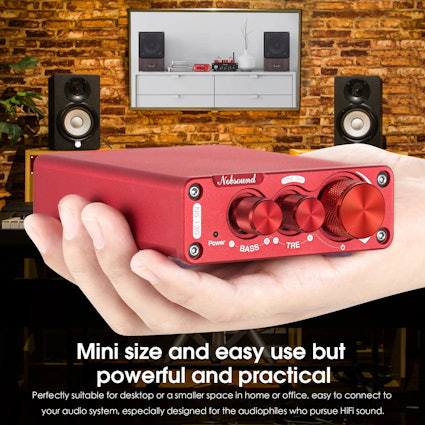

Showing 26 of 51
PRODUCTS YOU MAY LIKE
Trending Posts in Audiophile
AntonetteCBak
Tips for Setting Up a Trading Desk with a Laptop
Creating an efficient and organized trading desk with just a Best laptops for trading requires a strategic approach to maximize productivity and trading success. Whether you’re a beginner or a seasoned trader, having the right setup ensures seamless execution of trades, minimizes errors, and keeps you focused. Below are essential tips to set up a professional trading desk using a laptop. Invest in a high-performance laptop tailored to trading needs. Opt for a model with a fast processor (e.g., Intel i7 or AMD Ryzen 7), at least 16GB of RAM, and a solid-state drive (SSD) for quick data access. Ensure the laptop has multiple ports for connecting peripherals and a high-resolution display for crisp chart visibility. Trading often involves monitoring multiple charts, news feeds, and trading platforms simultaneously. Connect your laptop to external monitors using HDMI or USB-C ports to expand your workspace. Dual or triple monitor setups allow for better multitasking and a...
Nov 21, 2024

abhinavkumar
Company Information in Dubai
Get comprehensive company information in Dubai, including registration requirements, licensing options, and compliance guidelines. Whether you’re exploring free zones, mainland, or offshore setups, our expert resources provide insights to help you make informed business decisions. Navigate Dubai’s business landscape with clarity, from legal requirements to operational support for a successful establishment. For more details:- https://leelainternational.com/
Nov 21, 2024

Leafwise
Show off your carry / bag / case / setup for your Head-Fi gear ✨
As subject, what do y'all carry your gear in for out-and-about/day-to-day and then for travel, if anything other than pockets?
Nov 19, 2024
keegu22
More bass!
I currently have the the HD 6XX, which sound great but, I'm am looking to upgrade the power of the bass as i really enjoy punchy low end EDM music. Any suggestions in the $200-$300 price range would be awesome.
Nov 13, 2024

danielj9
Trying to add Topping LA90D amp to Topping A9D preamp
Any help would be appreciated...I added an amp to my streamer, dac, headphone amp/preamp system and am now not getting any music through the headphone jacks on the preamp - the specifics: Wiim Pro Plus - optical connection to - Topping D50 iii dac - TSR to XLR connection to - Topping A9D headphone amp/preamp (all worked fine as a headphone amp until I tried adding:) - XLR connection to - Topping LA90 D amp. Amp switches are set to bypass, stereo, low gain. In this configuration, I am not getting any music to either my SE or XLR headphone jacks. I made sure I switched the A9D to "preamp" and "xlr" modes. I have no idea what I might be overlooking or missing...any thoughts would be deeply appreciated! Thank you.
Nov 11, 2024

Tremuh
Trying to find new headset
I currently am rocking the beyerdynamic DT 990 Pros and have been for a while now, along with a go xlr! I was trying to see what other headset you guys recommend along with something to replace the xlr? Thank you!
Nov 7, 2024

aiden.miller
Mic not working pc38x
I just got my pc38x in the mail today and the out put is quiet but fine and I'm happy. But the mic will not work when on my Xbox series and I was wondering if this issue can be resolved or if the head set is not compatible with Xbox.
Nov 4, 2024



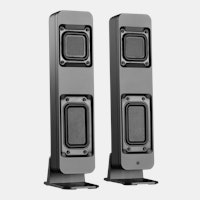

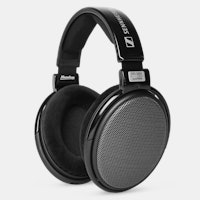

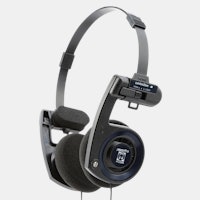
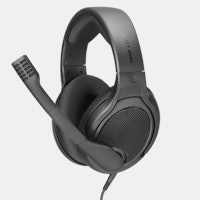
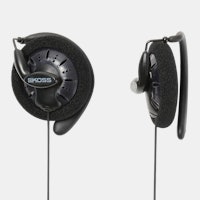
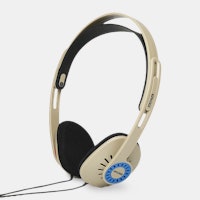
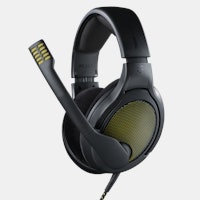
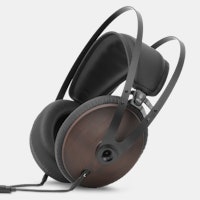

What are some of the benefits of using Balanced Mode Radiators? - Wide dispersion. The extended output off-axis leads to a room-filling sound, improving both coverage and intelligibility for multiple listeners. - Improved dimensionality and soundstaging. The typical requirement for a crossover in the critical 1kHz – 5kHz region (where the human hearing mechanism is most sensitive) is eliminated. Usually, speaker manufacturers pull down this area of the spectrum, as it is possible to hear higher distortion when sound moves from Tweeter to Woofer, and vice versa. This same area (1kHz – 5kHz) is also where the “three-dimensionality” of sound occurs. In other words, the better this area performs, the better the soundstage sounds and feels overall. - Point-source integrity. The sound energy is coming from a single source and not multiple drive units located at different points in space. This, once again, leads to a better sound stage. - Superb timing. Thanks to a single acoustic source, the BMR1 is free of mid-tweeter comb filtering interference effects. - No megaphone sound. Flat disc diaphragm eliminates the “shouty” sounding megaphone effect produced by cone shaped diaphragms. - Reduced size. The flat disc reduces the build height of the drive unit and occupies less of the enclosure volume. We chose BMR drivers because they allowed us to develop a speaker with a smaller footprint than conventional speakers, allowing you to free up space on the desk or any other surface where you decide to use them. The end result? A compact footprint with a big speaker sound that competes with much larger drivers. The wide dispersion characteristics also enable more flexibility in placement. Whether you decide to use the speakers in portrait or landscape orientation, the sound quality will remain close to same.
How do BMR drivers work vs traditional drivers:
Pistonic speaker driver
Flat panel speakers
BMR speaker driver
Passive Radiators Another feature of the BMR1 is its use of passive radiators, which enable them to sound much fuller than their slim form would suggest. A passive radiator speaker is a clever way to get extra power and resonance out of a smaller speaker system. The reason they are called “passive” is that they do not have a voice coil or are connected to any wires; instead, they are powered by the air pressure created by the smaller active driver. Another benefit of passive radiators is the elimination of port noise, or “chuffing,” which occurs on bass-reflex ports when used at high volumes. The result is a more controlled low-end performance and better performance when the BMR1 is placed closer to back walls and other surfaces. Additionally, the BMR1 uses a pair of these passive radiators in a force-canceling design. With this design, the opposing radiators are placed to cancel out their own vibrations to reduce cabinet vibrations and improve the imaging capabilities. Since the BMR1 is designed to be a nearfield monitor, the force-canceling also means your desk will not be rattling even when played at high volumes. What speakers do you currently use in your workspace/on your desktop? Hit "Request" and stay tuned as we release more information next week.
edit: formatting